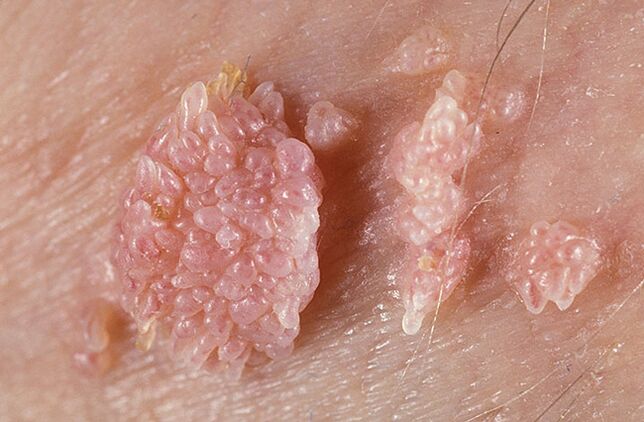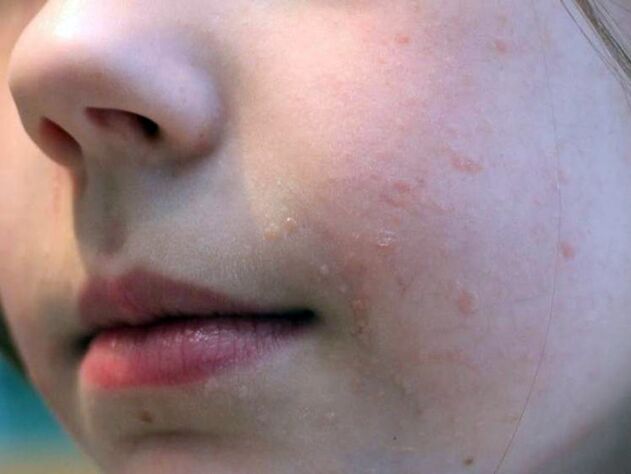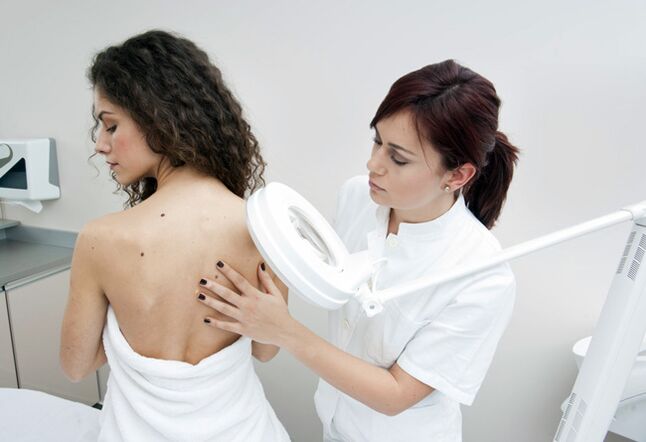
What Papillomas Look Like: Varieties and Types
- on feet and hands;
- face and neck;
- on the mucous membranes of the reproductive organs;
- in the nasopharynx and oral cavity;
- in the underarm area;
- in the urethra.
important!The main and only cause of papillomas is the human papillomavirus (HPV).
- with low level– Papillomas caused by HPV types 6 and 11;
- with high level– Tumors arising under the influence of HPV types 18, 31, 16, 35 and 33; such tumors have a high risk of developing dysplasia and cancer.
important!Papillomas are not malignant formations, but certain varieties can create favorable conditions for the development of precancerous lesions and cancer.

- Warts are flat– Round or oval warts, 1-2 mm above the skin. They are found in teenagers and young adults, which is why they are also called "juvenile warts. "
- Warts are simple ("vulgar")– Approximately 2-3 mm above the skin, most commonly seen on the feet, palms and hands, and may be rough to the touch.
- genital warts– Looks like cockscombs or cauliflower. Most commonly they are found on mucous membranes - the urethra, genitals and mouth.
- filiform warts– This type is often called a "papilloma" and is common in people over the age of 35-40. They are most common in women's armpits, face and neck, and under the breasts. No larger than 3-5 mm in size and looks like a round or linear growth.
Why do papillomas occur?

- decrease in immunity– Affected by past infections, stress, long-term illness, vitamin deficiencies.
- bad habits– Smoking and alcohol abuse often lead to the development of tumors.
- promiscuity– Papillomas are usually transmitted sexually, and concomitant diseases of the reproductive system only promote the development of HPV.
important!HPV is acquired through sexual contact in 50% of cases. Therefore, doctors consider anyone who is sexually active to be at risk.
- Sexually- Most common routes of infection. Using a condom does not eliminate the risk of infection, especially if the growth is located in the perineum or anus.
- during pregnancy and childbirth– If a mother is infected with HPV, the virus can be passed to her child during delivery or through breast milk.
- through daily means– Violation of hygiene standards when using general hygiene products.
How to get rid of papilloma

important!Do not under any circumstances cut, scratch or pop out a tumor yourself!
notes!It's impossible to completely eliminate papillomavirus, but you can prevent the dangerous progression of the disease by removing papillomas at home or in a clinic.
clinic treatment

- Laser removal.The easiest and most common method is to remove the growth with a laser after being anesthetized with an anesthetic. The surgery takes approximately 20-30 seconds per tumor. After cauterization, a crusty layer of skin remains on the skin that cannot be removed - it will fall off on its own after a few days. In this way, it is recommended to remove papillomas on the neck, face, armpits, and under the breasts, where the skin is very delicate and easily injured.
- Radiosurgery.From the perspective of implementation principle, this method is similar to laser ablation, but its unique advantage is that radio wave treatment is less dangerous to the human eye, so it is more suitable when removing eyelid and facial papillomas.
- freeze damage– Cold cauterization using absorbent cotton soaked in liquid nitrogen (liquid nitrogen temperature is -15 degrees). After a few days, the frozen growth will fall off on its own. The procedure does not require anesthesia, but is not recommended on the face as the liquid nitrogen treatment may cause temporary redness of the skin.
- electrocoagulation– An outdated method that uses electrosurgery to burn away tumors with high-frequency currents.
- excision with scalpel– The previously common method of papilloma removal is now hardly used in any clinic due to the high risk of skin trauma.
treatment at home
- You cannot remove genital warts on your own.
- It is impossible to remove growths of unknown nature that show signs of bleeding, inflammation, or overgrowth.
- You can't remove a tumor from your face - it may leave a scar or scar that your doctor won't be able to remove later.
- garlic.Cut a piece of garlic, apply fresh garlic juice to the area where it grows, and secure it with adhesive tape. Repeat twice daily for 2-4 weeks.
- Celandine juice.Cut off the stems of celandine and apply the juice where it drains to the new growth. You can perform this procedure 2-3 times a day for 14 to 30 days. This method allows you to quickly and painlessly remove papillomas from your face at home.
- Laundry soap.Apply foam to the skin in areas with growth several times a day. Treatment is not effective for old multiple tumors.
- castor oil.Lubricate the area around the papilloma 1-2 times a day for 1-1. 5 months.
- vinegar.You can mix 70% vinegar and glycerin in equal proportions and apply it to the growth three to four times a day. Or lubricate the papilloma with regular 5% vinegar every day.

important!Various Papilloma Dietary Supplements, Abbey Tea, Parasite and Papilloma Tea - Not Helpful in the Treatment of Papilloma!















